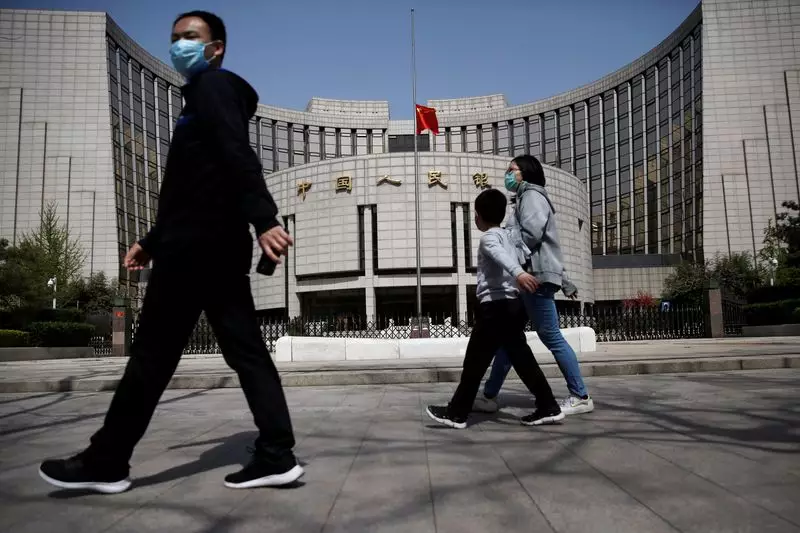China recently made an unexpected move by cutting both short and long-term rates by 10 basis points, signaling a shift towards supporting economic growth. This decision came shortly after the release of a policy document outlining the country’s ambitions for the economy. The People’s Bank of China reduced rates on its seven-day reverse purchase agreements, leading to a similar decrease in its loan prime rates (LPR), which had a ripple effect on bond yields across the curve.
Expert opinions vary on the significance of this rate cut. Ben Bennett, Head of Investment Strategy for Asia at LGIM in Hong Kong, expressed surprise at the decision and speculated on a potential pro-growth shift in Chinese economic policy. Gary Ng, Asia-Pacific Senior Economist at Natixis in Hong Kong, highlighted the weak Q2 GDP data and high real rates as factors necessitating a lower rate environment in China. Tommy Xie, Head of Greater China Research at OCBC in Singapore, noted the need for more monetary policy support following the recent third plenum, which emphasized economic reform as a priority. Kiyong Seong, Lead Asia Macro Strategist at Societe Generale in Hong Kong, warned against sparking further market rallies and emphasized the importance of supporting long-dated bond selling.
Ju Wang, Head of Greater China FX & Rates Strategy at BNP Paribas, attributed the rate cut to a pro-growth policy shift and the commitment to achieving the annual GDP target. Lynn Song, Chief China Economist at ING in Hong Kong, believed that recent weak data had increased pressure for monetary easing, and the slight softening of the dollar provided an opportunity for the PBOC to cut rates.
Future Implications and Policy Changes
It remains to be seen whether this rate cut marks the beginning of a new cycle or if it is a one-off event. Observers are keen to monitor the upcoming changes in the required reserve ratio (RRR) and the issuance of the Medium-term Lending Facility (MLF). The PBOC may consider further policy adjustments in response to maturing MLF to inject more liquidity into the market. The potential impact on the China bond market and the effectiveness of monetary easing expectations will be closely watched in the coming months.
The decision to cut rates in China is influenced by both domestic and international economic conditions. The authorities may be responding to a weaker Q2 GDP and high real rates within the country. Additionally, the potential for a Fed rate cut has provided breathing room for the PBOC to adjust its monetary policy. The stability of the U.S. dollar and the implications for the USD-RMB exchange rate will also play a role in shaping China’s economic outlook.
China’s rate cut reflects a nuanced response to various economic challenges and opportunities. The decision to reduce rates aims to stimulate economic growth, address weak data, and navigate global economic trends. The long-term implications of this move will depend on how it is integrated into broader policy changes and how it impacts market dynamics. Observers will continue to monitor China’s economic performance in the coming months to gauge the effectiveness of these monetary policy adjustments.

